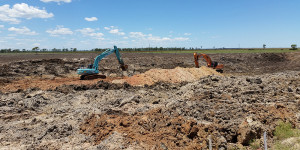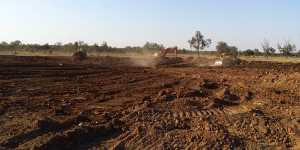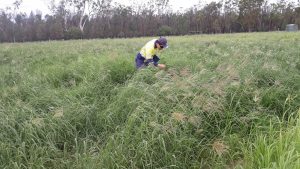BeneTerra has successfully rehabilitated over 150 sites across Queensland that were previously disturbed by industry. By reestablishing soil profiles to reflect the surrounding natural environment, we have enabled these sites to be returned to their original landholders in as good or better condition than before the disturbance.
We specialize in rehabilitating soils affected by industrial activities, as well as those impacted by water and wastewater. Our processes are built on sound science, ensuring efficient and successful outcomes. Notably, BeneTerra has never experienced a failure at any of its rehabilitated sites, both from environmental and regulatory perspectives. This track record forms the foundation of the BeneTerra Guarantee.
Our comprehensive land rehabilitation services cover all stages, from detailed planning to implementation as Principal Contractor and final handover to the client. Our services include:
- Environmental site assessment
- Rehabilitation planning (including land use planning, soil profile reconstruction, landform planning and design, and target species for revegetation)
- Rehabilitation civil works as Principal Contractor under the guidance of an appropriately qualified person
- Validation reporting certified by an appropriately qualified person
We also perform all stages of soil erosion repairs to built assets, from detailed planning to implementation as Principal Contractor:
- Site assessment to inform soil type and drainage plan
- Erosion and Sediment Control planning and/or dispersive soil management plan
- Reinstatement plan certified by a suitably qualified person
- Erosion repair works as Principal Contractor under the guidance of an appropriately qualified person
- Validation reporting certified by an appropriately qualified person
The Importance of Proper Soil Reclamation
Improperly reclaimed soils present legacy liabilities. Soils are often misunderstood and neglected in the processes of mining or building pipelines, roads, ponds, or well pads. This neglect can leave barren scars on the landscape, susceptible to erosion and leading to pollution of stormwater, unstable earthen structures, scouring of pipeline trenches, and acid mine drainage, all of which expose stakeholders to long-term liabilities.
Understanding the Soil Profile
Soils are more than just finely ground rock. Topsoil harbors robust microbial communities and supports plant growth. Beneath the surface layer, various horizons or layers form over time, each with distinct qualities affecting water infiltration and root extension. Subsoils can profoundly impact the stability of roads, bridges, and buildings, making it crucial to understand the entire soil profile before undertaking rehabilitation.
Our team thoroughly investigates pre-existing site conditions, studying surrounding native vegetation, local geology, landscape position, and deep soil horizons. We strive to understand the placement of disturbed soil materials to achieve the best outcome. Sometimes, reestablishing native horizons is not the best option. Certain soils may have undesirable qualities just beneath the surface, such as accumulated salts or clays, which create no-go zones for plant roots or impede water drainage. In these cases, a reclaimed soil profile may be superior to native conditions.
Reestablishing a Soil Profile
Our team identifies and locates displaced soil materials before devising a rehabilitation plan. This can be challenging, especially when reclaiming pond sites where subsoil materials were used for building earthen batters or dikes. Once located and mapped, we develop a plan to recreate a soil profile that will produce the best outcome. This is often difficult as soil materials are blended during the initial disturbance process. However, we have also purposely blended materials to ameliorate or dilute undesirable soil qualities, such as acidic pH.
Ensuring Success
Before any field operations, topographic surveys are performed to create erosion and sediment control plans. A contouring plan is also developed so that final surface drainage meets the desired objectives. Our team reviews the reconstruction map with earthworks operators to ensure full understanding. Once bulldozers commence work, our staff is present to ensure the plan is correctly executed. Extensive in-field testing, such as bulk density, salinity, and pH tests, occurs throughout the process to avoid over-compaction or subsidence.
After achieving the final contour, topsoil material is spread across the site. Amendments, fertilizer, and seed are then applied and incorporated as needed. In some cases, portable irrigation systems are used to irrigate the site.
For more information, see our case histories and the paper by Bailey & Zupancic on CSG pond site rehabilitation.



